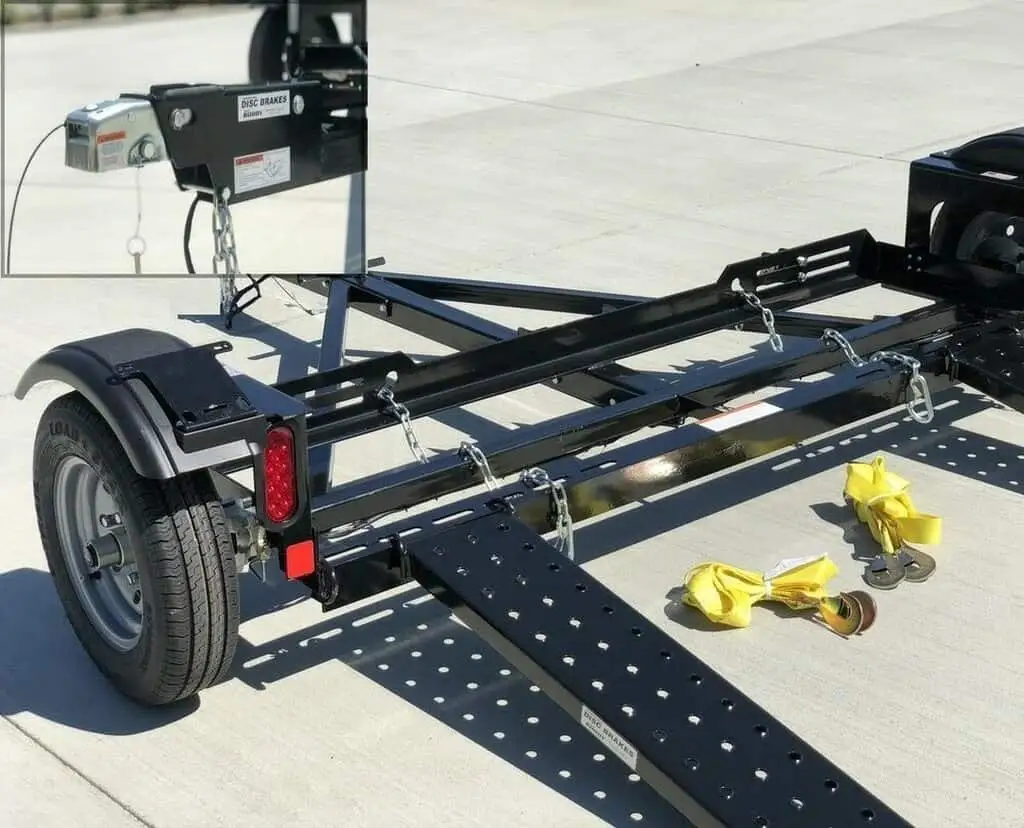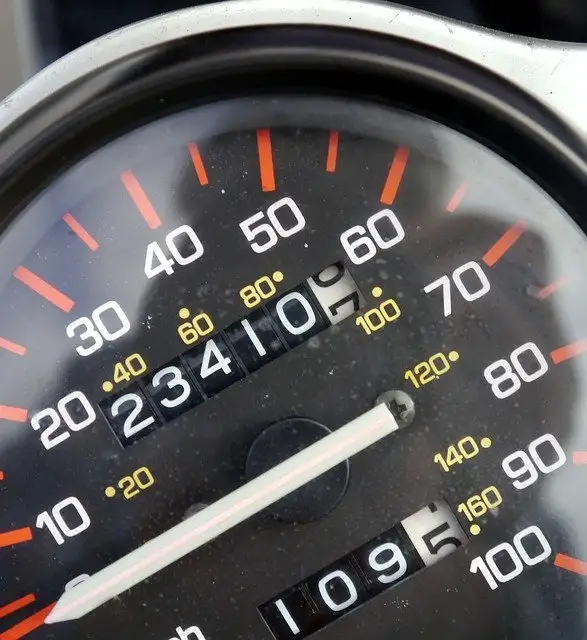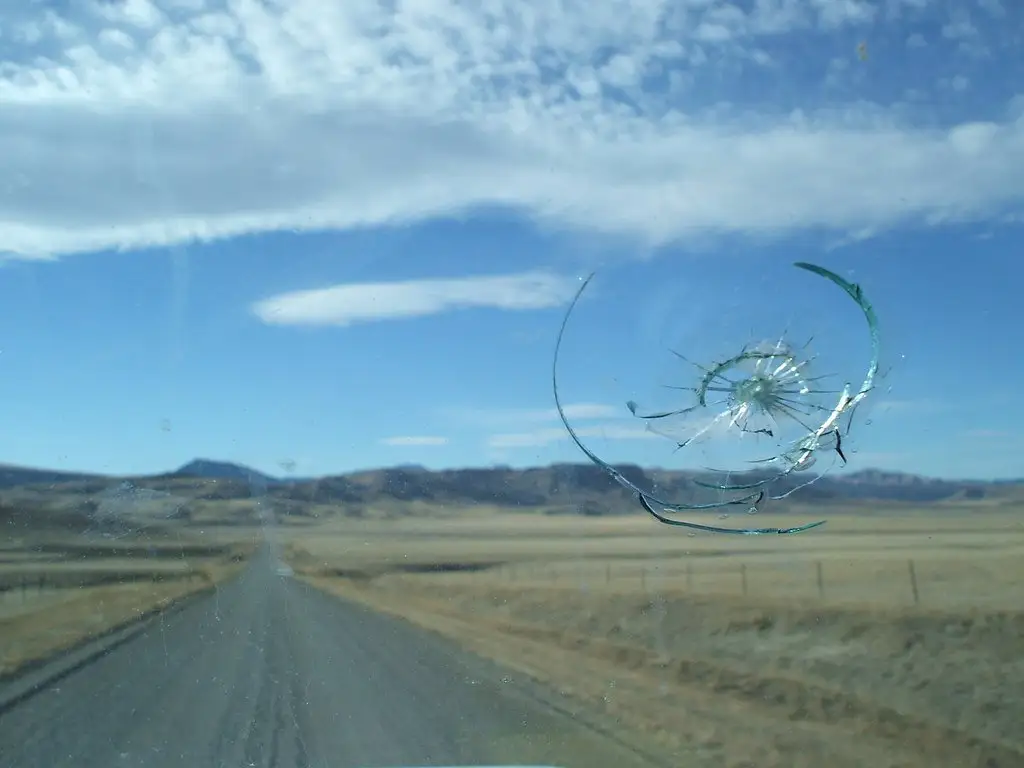We often hear a question about RV towing that pops up from both new and experienced RVers alike. That question is: Does towing a car behind an RV put miles on it?
Before we jump into it, we implore you not to rely on any website or source that gives you a definitive “yes” or “no” answer to this question. It’s lazy and flat-out incorrect.
The reality is that towing a car behind an RV may or may not put miles on your vehicle depending on the variables at play (how’s that for certainty?). The answer lies in the details and a simple “yes” or “no” will not help you at all.
Okay, enough of the talk, let’s get started. We’ll take a close look at the factors that will determine if towing a car behind an RV will put miles on it.
(Please note that BeginRV may earn a small commission if you purchase from a link on this page)
Dolly Towing vs. Flat Towing
To help you better understand if towing a car behind an RV will put miles on it, let’s distinguish between two types of RV towing:
- Dolly towing
- Flat towing
Dolly Towing
The first method to tow a car behind an RV is by using an RV tow dolly. A tow dolly is a small, 2-wheel trailer designed to tow carry the front wheels of a car while the back wheels remain on the road.
A tow dolly is typically connected to the RV by a trailer hitch. To use the dolly, you drive the front wheels of your car onto the dolly and anchor them down with specially designed straps. The rear wheels of your vehicle will remain on the ground.
RV tow dollies work best with front-wheel drive vehicles as their drive trains will stay motionless. In front-wheel drive vehicles, the emergency brakes are integrated into the rear wheels, while odometer sensors are integrated into the front suspension. Since the front wheels of the vehicle are stationary on the dolly, no mileage is being recorded or accumulated.
If your car is rear-wheel drive, then yes, it will accumulate mileage as the axle and tires are moving.
You should never tow an all-wheel-drive (AWD) vehicle with wheels on the ground without first consulting your owner’s manual for instructions. Towing a vehicle that has a fixed AWD system on two wheels can be dangerous. It can not only damage the transmission system but will also damage the drive components which can run you thousands of dollars in repairs.

Today, most RV tow dollies that are sold feature their own independent braking system. This means that when you put the brakes on your RV, the dolly will also make the effort to stop. Not only does an independent braking system make an RV tow dolly a much safer option than it was in the past – it is required by law in many states.
Pros of the Tow Dolly
- Cheap cost to rent: You don’t have to buy a tow dolly if you are only using it for a one-off trip. You can rent a tow dolly from places like U-Haul for less than $50 a day. U-Haul even has a feature where it will allow you to enter the tow car and towing car to see if the tow dolly is compatible.
- More vehicles you can tow: There are only a limited number of vehicles you can tow using the flat towing method. Flat towing a non-compatible vehicle can severely damage the transmission of your car costing you thousands of dollars. Depending on the weight and size restrictions of your specific dolly, the tow dolly has much more flexibility in what types of vehicles you can tow behind your RV.
- No transmission or battery drain: Because the two front wheels are on the tow dolly, there is no need to have the keys in the ignition and your ignition in the on position for your vehicle to move. This means there is very little additional wear-and-tear on the vehicle.
Cons of the Tow Dolly
- Cost to buy tow dolly: Tow dollies themselves can cost several thousand dollars. On average, tow dollies can run you between $2,000 to $4,500. The final cost will depend on factors such as car carrier capacity, materials, and the type of brakes.
- Anchoring the wheels: You will always need to anchor your wheels down onto the tow dolly. This requires a bit of extra physical labor and effort over and above what is required for flat towing.
- Storing the tow dolly: When you use a tow dolly, you will need to find an extra space to store your tow dolly both at home and on the road. Generally, it’s not a huge deal as typically most campsites will have room to accommodate, but it should be a consideration before you leave on your trip.
Bottom Line: Using a tow dolly with front-wheel drive vehicles should not add mileage to the odometer of your vehicle. If you dolly tow a vehicle with rear-wheel drive then, yes, you may be adding mileage to the odometer of your vehicle.
Flat Towing Behind An RV
The other, and more widely recognized style of car towing behind an RV is “flat towing”. Flat towing (or “four wheels down” towing) involves attaching a tow bar to the towed vehicle and allowing it to roll behind the RV on its own four tires.
Flat towing a car behind an RV can put miles on the odometer in certain circumstances. Let’s find out a bit more.
Cars Manufactured Pre-2000 (Mechanical Odometer)
Most cars manufactured prior to 2000 came equipped with mechanical odometers. The Pontiac Grand Prix was the last GM car sold in the US to offer a mechanical odometer in 2003 and the Ford Crown Victoria and Mercury Grand Marquis were the last Fords sold with mechanical odometers in 2005.
Vehicles with mechanical odometers ran the odometer with a cable attached to a gear on the final drive of the transmission. Due to this mechanical setup, flat towing a vehicle with a mechanical odometer would in fact put miles on your car’s odometer in proportion to the distance driven by the towing vehicle.
Bottom line: If you have an older vehicle with a mechanical odometer, flat towing will put miles on your odometer.
Cars Manufactured Post-2000 (Electronic Odometer)
Mechanical odometers were phased out of the modern car in the early 2000s. Today, cars are made with electronic odometers or trip meters that work by counting your vehicle’s wheel rotations.

For electronic odometers, if the transmission is turning with the ignition on, the towed vehicle will put miles on the odometer.
Most often, RVers will pull vehicles that have a transfer case that can be shifted into neutral. So long as the transmission output shaft in most cars is not turning, or the ignition is off, it will keep the same mileage.
Bottom line: If the right precautions and steps are taken prior to your trip, flat towing a car with an electronic odometer should not put miles on the odometer.
Pros of Flat Towing
- Operating Cost: Once you have the right equipment for flat towing, costs are practically zero.
- Ease of connection/disconnection: The connection is straightforward if your brake lights are hardwired. One person can fairly easily connect and disconnect the car for towing.
- Storage: Unlike a dolly tow, no additional storage is needed at your destination or at home.
Cons of Flat Towing
- Set up Cost: Setting up a vehicle for flat towing can cost more than twice the amount of a tow dolly. This is due to the additional equipment and professional installation required to allow for flat towing.
- Limited choice of tow vehicles: Since most vehicles can’t be flat towed, you are limited in your choices.
- Battery Drain: In order to flat tow some vehicles, you must leave the ignition key in the “ON” position to allow the front wheels to turn freely. Doing this can run the battery down unless additional equipment is professionally installed to prevent this from occurring.
Does Towing Damage a Car?
One of the major questions that travelers have is: Does towing damage a car? We cannot offer a definitive “yes” or “no” because in reality, it comes down to:
- Preparation
- Doing things the right way
- Good old fashioned luck
If carried out properly, towing your car behind an RV should not damage your car in any significant way. Tens of thousands of travelers tow their cars each year and only a small fraction will experience any sort of significant damage.
However, there is an inherent risk that towing can damage your car in both minor and significant ways. Here are a few of the types of damage that can occur while towing a vehicle.
Cosmetic Damage
The most common cause of damage to your towed vehicle is cosmetic. These can include scratches to the paint, dents, damage to the wheel and tires, and cracks in your windshield from flying debris on the road.

This type of damage should not affect the performance of your vehicle, but it doesn’t mean it won’t be costly. Restoring paint, repairing a dent, or replacing a windshield can run anywhere between a few hundred to $2000.
Cosmetic damage is largely unavoidable, but there are a few important steps you can take to protect your vehicle which we will discuss in more detail below.
Mechanical Issues and Transmission Damage
Mechanical damage is what you want to avoid when towing a car behind an RV. While cosmetic damage is largely unavoidable and relatively inexpensive to fix, mechanical damage can run you well into the thousands.
The good news? Mechanical damage is easy to avoid if you know what you are doing.
Generally, a vehicle with a manual transmission shouldn’t cause many issues when towing – even long distances. This is possible because as the driving wheels roll, they turn gears inside the manual transmission and it self-lubricates as a result of the gears spinning in the lubricant, which is then transferred to other parts.

Things get a bit more complicated with an automatic transmission and four-wheel drive vehicles as they require careful precaution prior to towing. As the driveshaft or drive axles are turned by the wheels in an automatic transmission, they turn components inside the transmission.
An automatic transmission is only lubricated when the engine is running, which produces hydraulic pressure that pumps fluid throughout to lubricate. If you fail to lubricate it, damage to your automatic transmission is likely to occur.
While we won’t go into detail here, we will say it’s critical that you understand your vehicle’s specs and carefully read your vehicle’s owner manual prior to towing. If it’s your first time towing your vehicle behind your RV, you may even want to go to your local dealership to have them walk you through the process step-by-step.
Improper towing methods could cause serious mechanical damage to your car that will be very costly to repair. Many vehicle models simply cannot be towed flat at all – a fact that you want to know before you tow your vehicle.
Do I Need a Tow Car Shield?
One way to protect your car from cosmetic damage while towing it behind an RV is to get a tow car shield. A tow car shield is a protective covering that either attaches to the outside windshield of your vehicle or attaches to your front bumper.

- The Protect-A-Tow is a reliable and easy-to-install product to help protect your towed vehicle against flying debris.
- Another excellent option to protect your vehicle is the Blue Ox KarGard Protective Shield. It works great to protect your bumper and windshield from rock chips and paint damage.
- The Camco Vinyl Tow Car Windshield Protector protects just the windshield of the car. It’s a great option if you are mainly worried about cracks in your windshield from rock debris.
So, Does Towing a Car Behind An RV Put Miles On It?
We hoped we helped you answer the question, does towing a car behind an RV put miles on it? Despite what you may read elsewhere, the question is a bit more complicated than you may have first thought.
The most important thing to remember is that every car is different. Despite their good intentions, you should take the advice of fellow RVers with a grain of salt. It is impossible to know whether or not you will put miles on your car while towing unless you know the specs of your specific vehicle.
If you have experience towing your vehicle behind an RV, please share it with us. We love to hear from our loyal readers. We often find that we can elaborate or provide more specific information when our readers share their personal experiences.
Until next time, easy travels.
